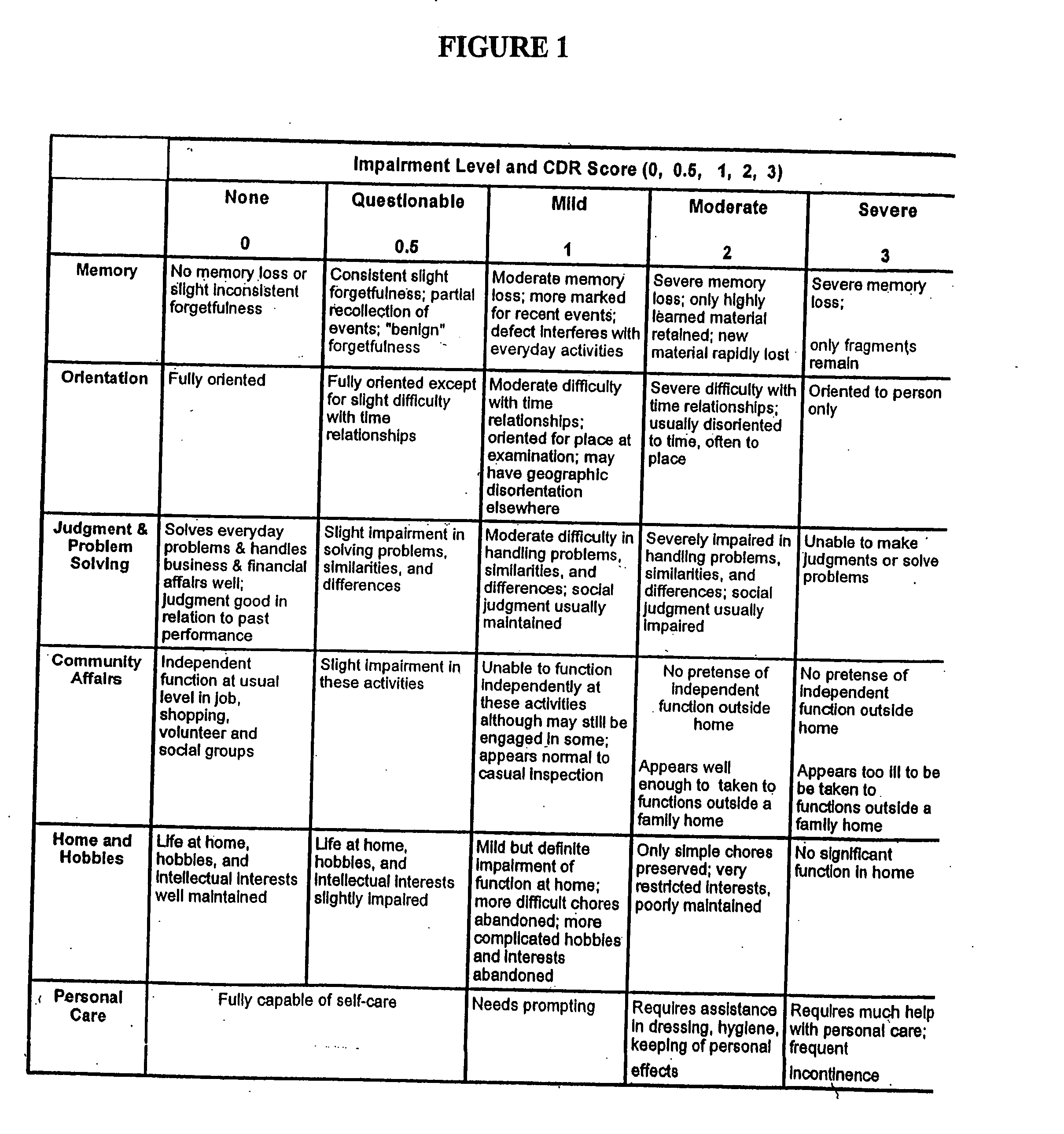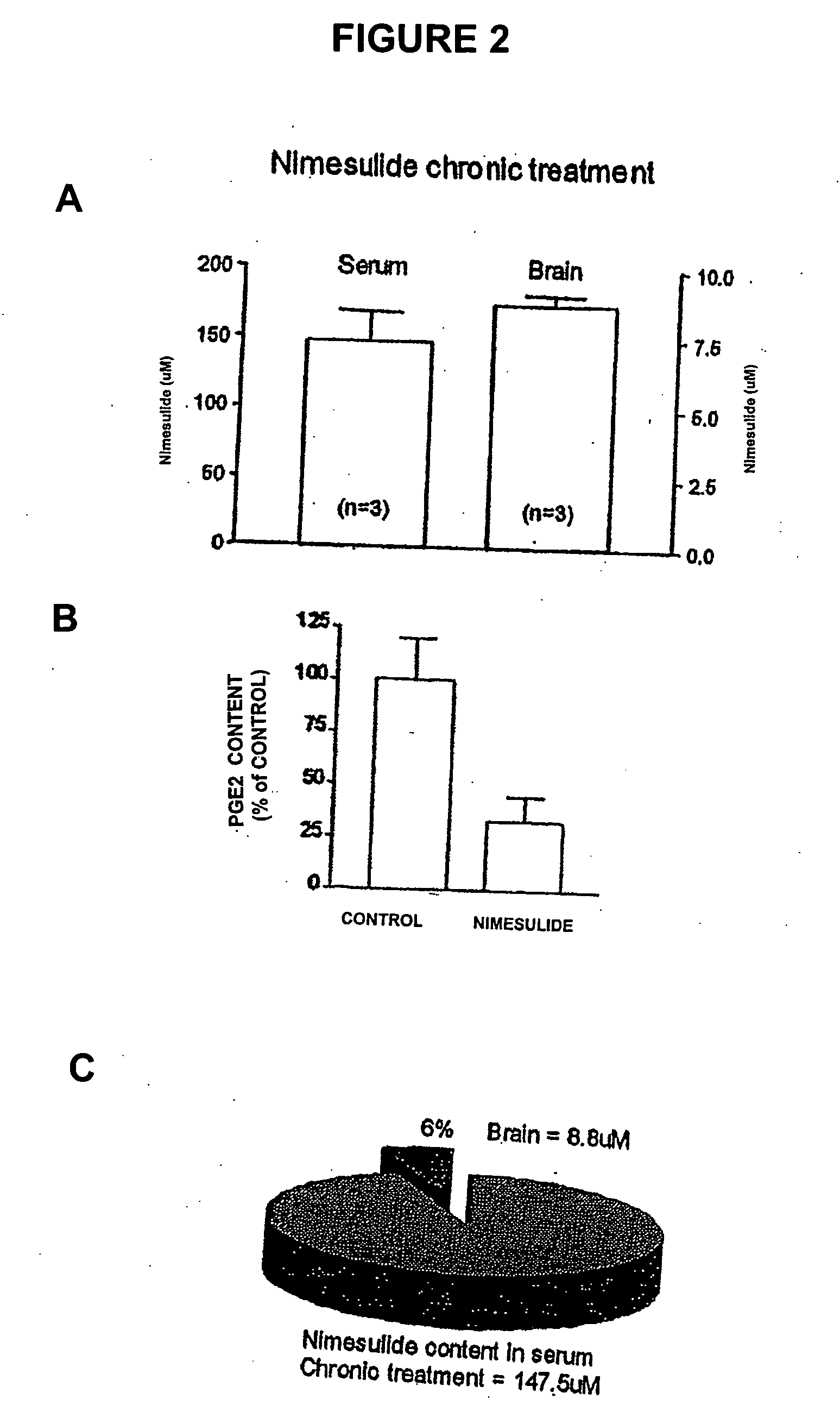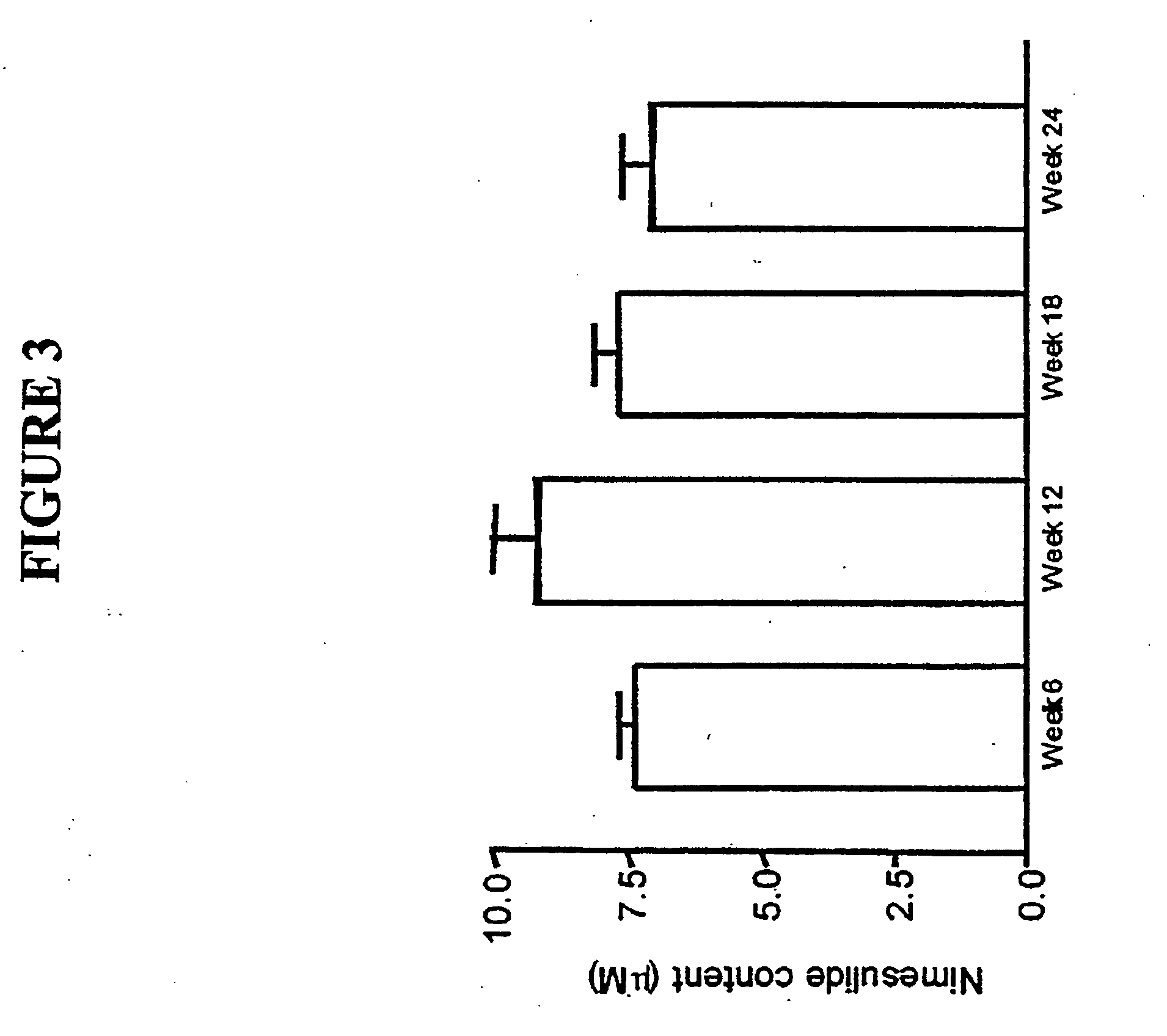Inhibiting progressive cognitive impairment
a cognitive impairment and inhibition technology, applied in the field of can solve problems such as not consistently positive, and achieve the effects of inhibiting the activity of secretase-, inhibiting progressive cognitive impairment, and reducing the levels of a40 and a42
- Summary
- Abstract
- Description
- Claims
- Application Information
AI Technical Summary
Benefits of technology
Problems solved by technology
Method used
Image
Examples
Embodiment Construction
[0026] The present invention provides for methods of inhibiting progressive cognitive impairment by administering effective doses of nimesulide over a treatment period.
[0027]“Inhibiting progressive cognitive impairment” is defined as retarding deterioration in cognition in a subject at risk for developing a progressive cognitive disorder. A deterioration in cognition means a decrease in the ability of a subject to perform mental tasks. There are numerous standardized tests for assessing cognition and identifying deterioration in cognition. For example, but not by way of limitation, cognitive impairment may be measured using the Clinical Dementia Rating Scale (“CDRS”), as set forth in FIG. 1. Other non-limiting examples of such tests include the Mini-Mental Status Exam (“MMSE”; Tangalos, et al., 1996, 71:829-837), Kokmen Short Test of Mental Status (Kokmen et al., 1991, Arch. Neurol. 48:725-728), 7-Minute Screen (Solomon et al., 1998, Arch. Neurol. 55:349-355), and the Memory Impair...
PUM
| Property | Measurement | Unit |
|---|---|---|
| MRI | aaaaa | aaaaa |
| size | aaaaa | aaaaa |
| synaptic plasticity | aaaaa | aaaaa |
Abstract
Description
Claims
Application Information
 Login to View More
Login to View More - R&D
- Intellectual Property
- Life Sciences
- Materials
- Tech Scout
- Unparalleled Data Quality
- Higher Quality Content
- 60% Fewer Hallucinations
Browse by: Latest US Patents, China's latest patents, Technical Efficacy Thesaurus, Application Domain, Technology Topic, Popular Technical Reports.
© 2025 PatSnap. All rights reserved.Legal|Privacy policy|Modern Slavery Act Transparency Statement|Sitemap|About US| Contact US: help@patsnap.com



